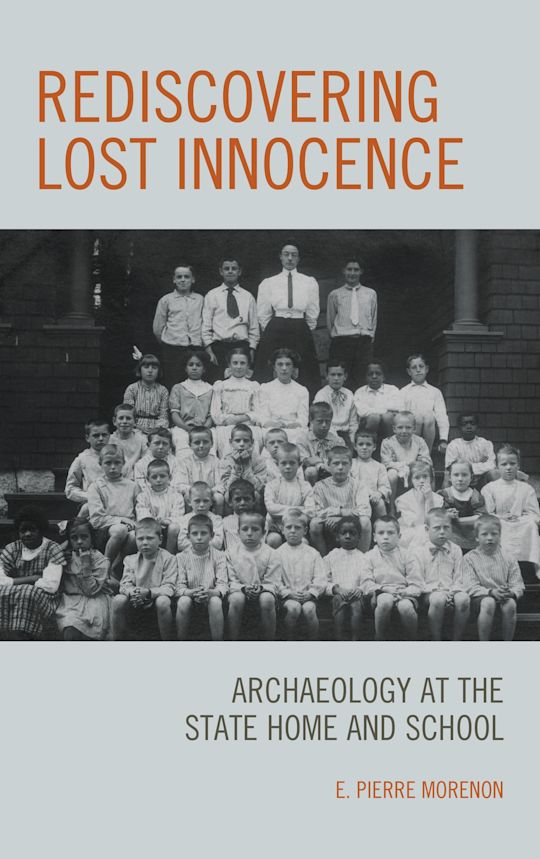- Home
- ACADEMIC
- Archaeology
- Archaeology - Other
- Rediscovering Lost Innocence
This product is usually dispatched within 2-4 weeks
- Delivery and returns info
-
Flat rate of $10.00 for shipping anywhere in Australia
You must sign in to add this item to your wishlist. Please sign in or create an account
Description
In the first half of the nineteenth-century, responsibility for child care primarily rested within families. Needy children were often cared for by community-sponsored efforts that varied widely in quality, as well as by benevolent organizations dedicated to children’s welfare. The late 1800s was marked by major social service infrastructure construction and development. During this period, guided by progressive concerns about the role of the state in responding to societal changes resulting from urbanization and industrialization, Rhode Island took on a more active statewide role in public education, sewers, parks, prisons, and child welfare systems. New ideas about civil rights extended to race, to women, to labor, and to children. Old institutions, such as town almshouses and poor farms, were replaced by state institutions, such as the State Home, which opened in 1885.
One might expect to find a huge record for custodial children well imbedded in regional literatures or social science and history texts, yet this is not the case. The State Home Project began in 2001 with no evocative life histories, and no local or regional childhood narratives about the former residents of the State Home upon which to build. It remains an important place because thousands of children and citizens lived portions of their lives there. Documenting children's educational, social and health experiences are not inconsequential. To be sure, varied narratives about custodial children developed as we dug into the soils, read unexamined case histories, and talked with former residents. Archaeology offers the possibility of recovering lost and missing details, and, in collaboration with other disciplines, creates a rich narrative of a place. These experiences were significant in our past; they are important to us in the present and to future generations. They demonstrate our common history.
Table of Contents
2: Children Lost and Found
3: Child Narratives in Unexamined Records
4: Recording Archaeological Details and Creating New Child Narratives
5: Collaborating
6: Do Archaeologists Overlook Children?
7: Dependent Children in Context
8: Neglected Children as Civic Responsibility
9: From Victorian Landscapes to a Child’s Treatment Center
10: Unearthing Cultural Details
11: Play and Community Relations
12: Bureaucracies, Power, and Punishment
13: Why Don’t I Know This?
Appendix A: State Home and School Project Timeline (2001–2010)
Appendix B: Rhode Island State Home and School/O’Rourke Children’s Center: Oral History Project
Appendix C: POST-2002 ARCHAEOLOGICAL FIELD PROTOCOL
Product details
| Published | 29 Nov 2017 |
|---|---|
| Format | Hardback |
| Edition | 1st |
| Extent | 328 |
| ISBN | 9780759110960 |
| Imprint | Rowman & Littlefield Publishers |
| Illustrations | 2 BW Illustrations, 38 BW Photos, 10 Graphs, 16 Maps, 35 Tables |
| Dimensions | 239 x 161 mm |
| Publisher | Bloomsbury Publishing |
About the contributors
Reviews
-
This is an intriguing case study and the volume includes considerable detail about the archaeological remains and the history of the institution.
Current World Archaeology
-
Morenon (anthropology, Rhode Island College) uses historical archaeology to examine the Rhode Island State Home and School, a late-19th- and 20th-century state institution that housed children whose parents were unable to care for them. The author situates the State Home in its historical and cultural contexts as a Gilded Age response to social changes resulting from urbanization and industrialization. He weaves together various strands, including archaeological data, architecture, life histories, and institutional records to highlight the importance of the site and the relevance of studying relatively recent institutions. Building on a long tradition of research in historical archaeology, the volume sheds new light on those who have been forgotten, focusing on the lives of children, a significant population that rarely sees careful archaeological study. Theoretically informed and methodologically sound, Morenon's study highlights the importance of an archaeological approach for understanding the recent past. Poignant and powerful, this is an excellent contribution to the archaeology of institutional life and an important example of the scholarship of civic engagement and public responsibility.
Summing Up: Highly recommended. Lower- and upper-division undergraduates; graduate students; professionals.Choice Reviews
-
Rediscovering Lost Innocence offers a rich and multi-faceted interpretation of the Rhode Island State Home and School. . . Because residential institutions were such a widespread phenomenon from approximately the mid-nineteenth to mid-twentieth centuries, this book is a useful comparative piece for those working on institutions anywhere in the United States, including the Midwest.
Midcontinental Journal of Archaeology



































